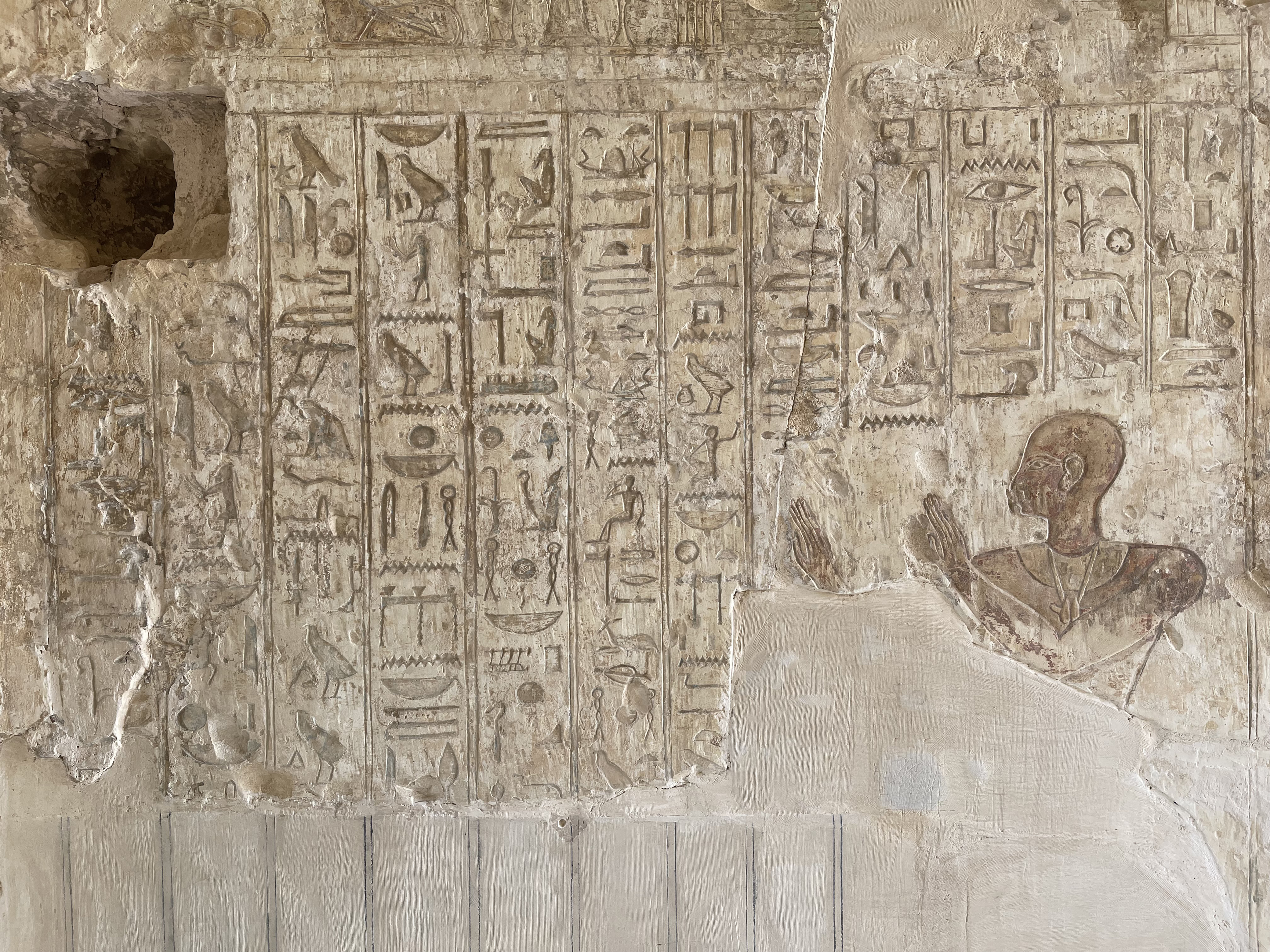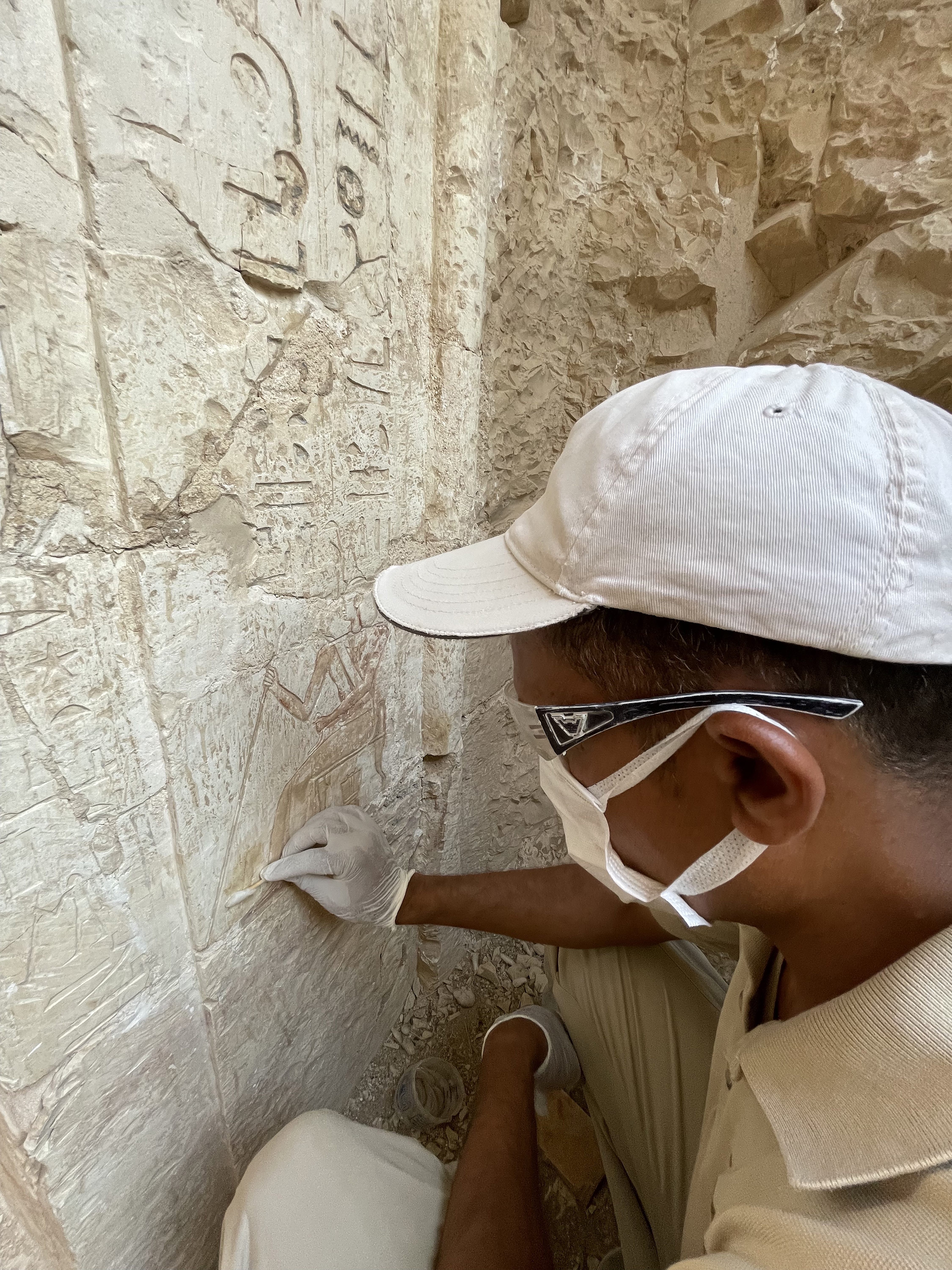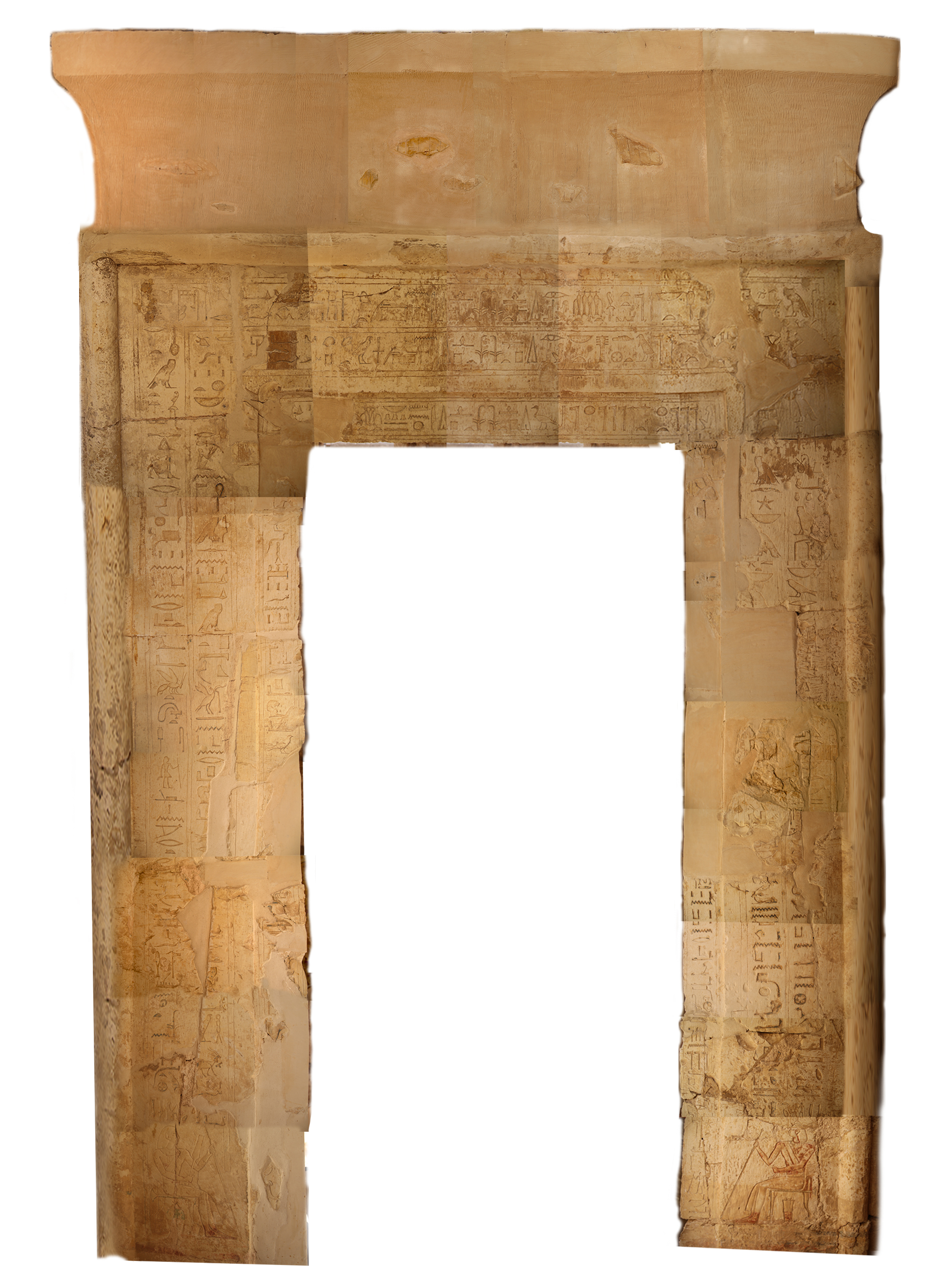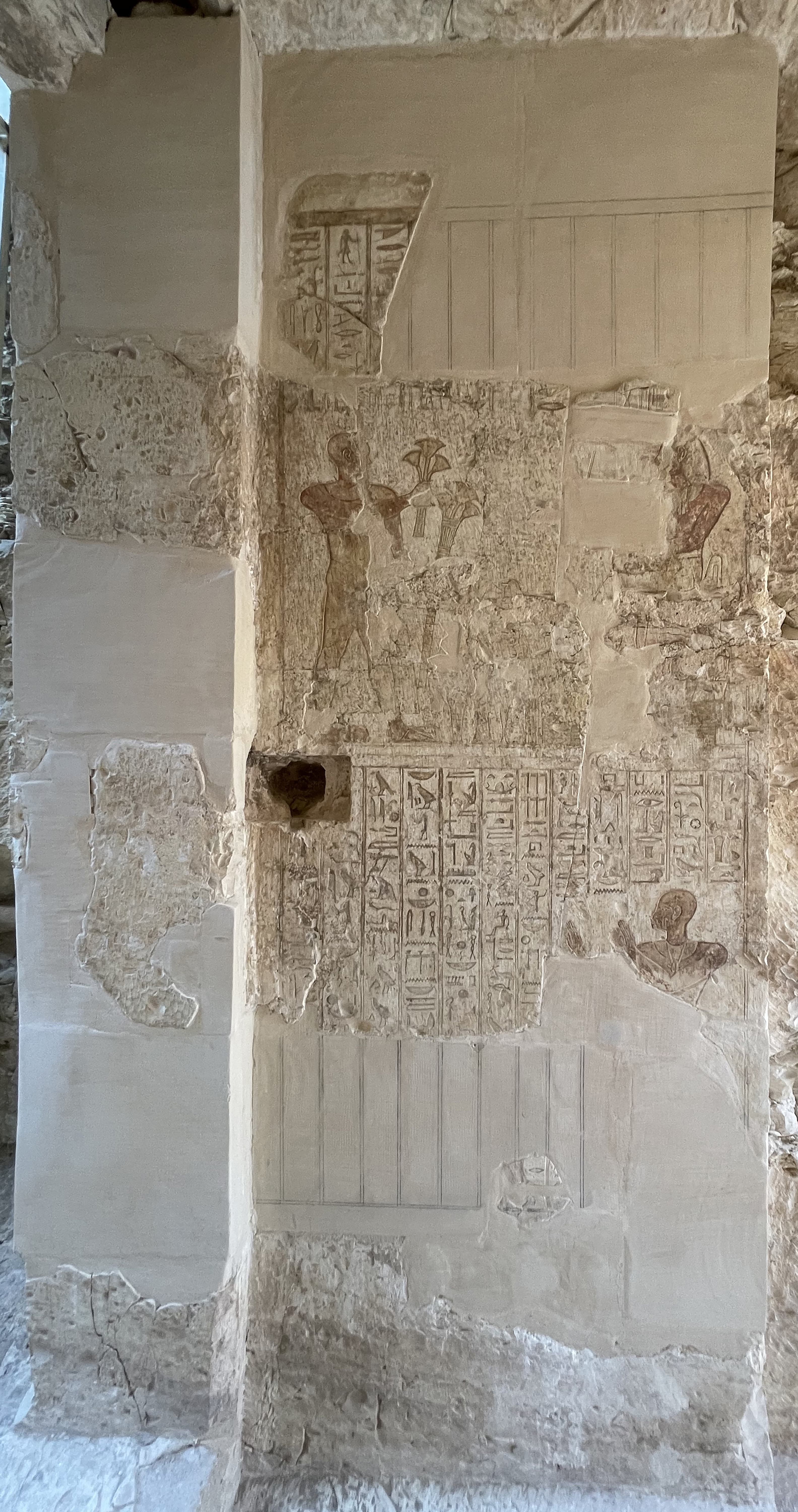- Era25th Dynasty
- Project DirectorDr. Elena Pischikova
- LocationSouth Assasif Necropolis, Luxor
- AffiliationAmerican University in Cairo (AUC)
- Project SponsorAntiquities Endowment Fund
- Project DatesJuly 2019- July 2022
The special significance of this project is in the “reconstruction” of a lost person through his monuments.
The texts and imagery of the previously unknown High Steward of the God’s Wife Padibastet were discovered in the tomb of Karabasken (TT 391) by the Egyptian-American archaeological team South Asasif Conservation Project (SACP), directed by Elena Pischikova. Padibastet’s title, High Steward of the God’s Wife, was one the highest in the realm in the Twenty-fifth – Twenty-sixth Dynasty. High Stewards were traditionally buried in illustrious temple-tombs in the North Asasif necropolis in front of the temple of Hatshepsut. Hence, it came as a big surprise that a Twenty-sixth Dynasty official of such high rank was buried in the Twenty-fifth Dynasty tomb of the Mayor of Thebes and Fourth Priest of Amun Karabasken (TT 391) in South Asasif.
Staircase Vestibule. South Wall. Bottom Register after Conservation. Photo Katherine Blakeney.
SACP member Erhart Graefe identified the newly discovered High Steward of the God’s Wife as the grandson of Pabasa A (TT 279). This discovery and its interpretation adjusted the chronology of the High Stewards of the God’s Wives of the Twenty-sixth Dynasty, adding the name of Padibastet between Padihorresnet (TT 196) and Ankhhor (TT 414) during the reign of Psamtik II. Padibastet probably died prematurely and didn’t have much time in office, otherwise he would have been buried in a monumental, richly decorated tomb similar to TT 279, which was designed for his grandfather. The South Asasif Conservation Project started working in the tomb of Karabasken in 2006. The tomb was damaged by multiple floods and later occupants and concealed under a thick layer of debris. It took the team of SACP almost ten years to clear it and find the remains of the decoration carved for Karabasken and Padibastet. “The tomb of Padibastet” in the tomb of Karabasken consists of several re-inscribed and original features. They include the doorframe of the main entrance to the tomb, south wall of the staircase vestibule, stela in the open court, lintel of the entrance to the chapel of Padibastet, carved into the south wall of the pillared hall and the entrance to the cult chamber.
Conservator Hassan El Dimerdash at work. Photo: Katherine Blakeney, SACP.
All the architectural features were destroyed or severely damaged. Only remains of the entrance doorframe, court stela and vestibule decoration were found in situ. Hundreds of fragments of the architectural elements, texts and images were discovered during clearance of the superstructure, court, and the underground part of the tomb.
The incredible work of the Project’s Egyptian conservation team Abdelrzk Mohamed Ali (head of team), Ali Hassan Ibrahim, Taib Hassan Ibrahim, Mohamed El Azeb Hakem, Hassan El Dimerdash, Said Ali Hassan, Mohamed Badawy, Mohamed Shebib, Taib Said and epigraphers and art historians Erhart Graefe, Elena Pischikova and Katherine Blakeney, enabled the conservation and reconstruction of Padibastet’s decoration.
The work started with mechanical and chemical cleaning and consolidation of every found fragment and section in situ. Photos and drawings of all the elements of decoration allowed preliminary digital reconstructions.
Meanwhile the conservation, stone cutting and building teams stabilized the areas in situ, injected and closed all the cracks and lacunae and recreated the missing sections out of new limestone quarried in Helwan. Reconstructed architectural elements enabled the re-positioning of detached fragments in the areas of their original locations. Deep sockets were carved in new limestone to receive the ancient fragments and ensure their stability and protection. This method of reconstruction allowed to restore and recreate important historical and religious documents as well as beautiful imagery.
Entrance Doorframe before Conservation and Reconstruction. Photo: Katherine Blakeney, SACP.
Entrance Doorframe after Conservation and Reconstruction. Photo: Katherine Blakeney, SACP.
Most of the entrance doorframe was found shattered. Numerous fragments of the doorjambs were unearthed during the clearance of the tomb. The lintel was located on the floor of the vestibule. During the reconstruction the lintel was lifted and secured above the doorjambs and the cavetto cornice was re-carved from new limestone to support the original fragments. Dozens of fragments were added to the doorjambs.
The reconstructed doorframe displays offering inscriptions and two seated figures of Padibastet in painted shallow sunk relief. Padibastet is represented in a long kilt with a protruding front part, shoulder length wig and a double amulet above the collar necklace. He sits on a lion-legged chair with a sacred oil jar under the seat. This image combines multiple references to earlier periods of Egyptian art with twists and interpretations of the Late period. Symbolically, Padibastet is shown at the entrance to the realm of Osiris, anointed with the sacred oils and provided for by the numerous gods mentioned in the offering texts.
Staircase Vestibule. South Wall before Conservation and Reconstruction. Photo: Katherine Blakeney, SACP.
Staircase Vestibule. South Wall after Conservation and Reconstruction. Photo: Katherine Blakeney, SACP.
Stela before Conservation and Reconstruction. Photo: Katherine Blakeney, SACP.
In the vestibule he is shown in adoration of the sun god, reciting the solar hymn written in front of him in the lower register and receiving floral offerings from his son Horsiese in the upper register. The scene of the divine adoration presents the finest execution of the head of Padibastet. His shaven head is drawn with a round dome, which extends well beyond the back of his long, elegant neck. His almond-shaped, slanted eye is fully rimmed. The thick plastic rim extends to the elaborately carved ear. The sophistication of this imagery was revealed after painstaking cleaning and consolidation of the surface, filling numerous lacunae and adding missing fragments.
Lunette of the Stela after Conservation and Reconstruction. Photo: Katherine Blakeney.
The open court stela features the text of the Ritual of the Second Hour of the Day and the scene of the Opening of the Mouth. Delicate shallow sunk relief carving was exposed during the cleaning of the stela. The scene on the lunette was completed with the fragments found in the court.
The entrance to the chapel of Padibastet, carved in the south wall of the pillared hall, was completely ruined. Conservation and reconstruction efforts in this area re-assembled a painted lintel with the figures of Osiris and Anubis seated back-to-back at offering tables. A complete set of canopic jars found in one of the two burial chambers at the bottom of the shaft was inscribed to the Mistress of the House Amenirdis, who could be a family member, possibly wife of Padibastet.
Research on the newly discovered High Steward of the God’s Wife Padibastet will continue further, now backed by the restored and reconstructed texts and images. As for Padibastet himself, he has already been reinstated in the solar-osirian realm of the temple tomb he is sharing with Karabasken.



